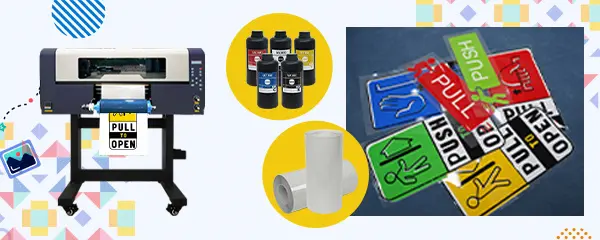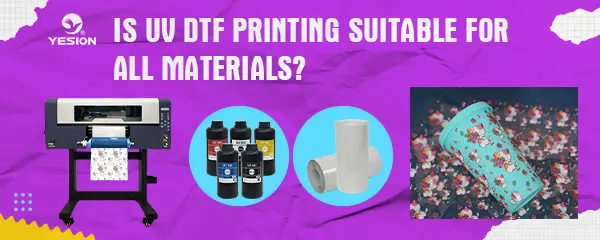
UV DTF Film Market Trends: What to Expect
2024-08-16
Best Substrates for UV DTF Printing
2024-08-23The advancement of UV DTF (Direct-to-Film) printing technology has revolutionized the printing industry, offering a versatile and innovative method for transferring designs onto various surfaces. However, the question arises: Is UV DTF printing suitable for all materials? Let’s dive into this problem.
Advantages of UV DTF Printing
Versatility Across Materials: One of the key strengths of UV DTF printing is its ability to adhere to a wide range of materials. From plastics and metals to glass and ceramics, UV DTF printing can effectively transfer designs onto many surfaces, making it a versatile option for manufacturers and designers.
Durability: The UV-cured inks used in the process are highly resistant to fading, scratching, and wear. This durability is particularly advantageous for products exposed to harsh conditions, such as outdoor signage or industrial equipment.
High-Resolution Printing: UV DTF printing excels in producing high-definition images with fine details. This makes it ideal for applications requiring intricate designs, such as custom electronics or promotional products.
Eco-Friendly: UV DTF printing is more environmentally friendly compared to other printing methods. The UV curing process minimizes the release of volatile organic compounds (VOCs), contributing to a cleaner production environment.
UV DTF Printing Technology
Limitations of UV DTF Printing
Despite its many advantages, UV DTF printing is not without its limitations. Understanding these constraints is essential when determining the suitability of this technology for specific materials.
Surface Compatibility: While UV DTF printing works well on many materials, it may not be suitable for porous or highly textured surfaces. The adhesion of the UV-cured inks can be compromised on surfaces that do not allow for smooth and even contact during the transfer process.
Material-Specific Adhesion: Certain materials, particularly those with low surface energy (e.g., some types of plastics), may require pre-treatment or special adhesives to ensure proper ink adhesion. This adds an extra step to the process, which may not be feasible for all production settings.
Material-Specific Considerations
To determine whether UV DTF printing is suitable for all materials, we must examine how this technology interacts with specific types of substrates.
Plastics
Plastics are a common choice for UV DTF printing, given their widespread use in consumer goods and industrial applications. However, not all plastics are created equal. Polypropylene and polyethylene, for example, have low surface energy, which can hinder ink adhesion. In such cases, surface treatment (e.g., flame or corona treatment) is necessary to enhance adhesion. On the other hand, ABS and polycarbonate are more receptive to UV DTF printing, offering excellent results without additional preparation.
Metals
Metals such as aluminum and stainless steel are excellent candidates for UV DTF printing due to their non-porous and smooth surfaces. The high durability of UV-cured inks complements the robust nature of these materials, making them ideal for applications such as nameplates, signage, and decorative items.
Glass and Ceramics
Glass and ceramics are increasingly popular substrates for UV DTF printing, especially in the creation of custom decor and promotional items. The non-porous nature of these materials allows for excellent ink adhesion, provided that the surface is clean and free from contaminants. Additionally, the use of a primer can further enhance the adhesion and durability of the printed design on these surfaces.

uv dtf printing
Textiles
UV DTF printing cannot be applied to textiles due to the flexibility and porosity of fabrics. Traditional DTF or sublimation printing methods are usually preferred for textiles because they have better flexibility and washability.
In conclusion, while UV DTF printing offers a highly versatile and innovative solution for transferring designs onto various materials, it is not universally suitable for all substrates. Before UV DTF printing, please check the substrate you are printing on.

